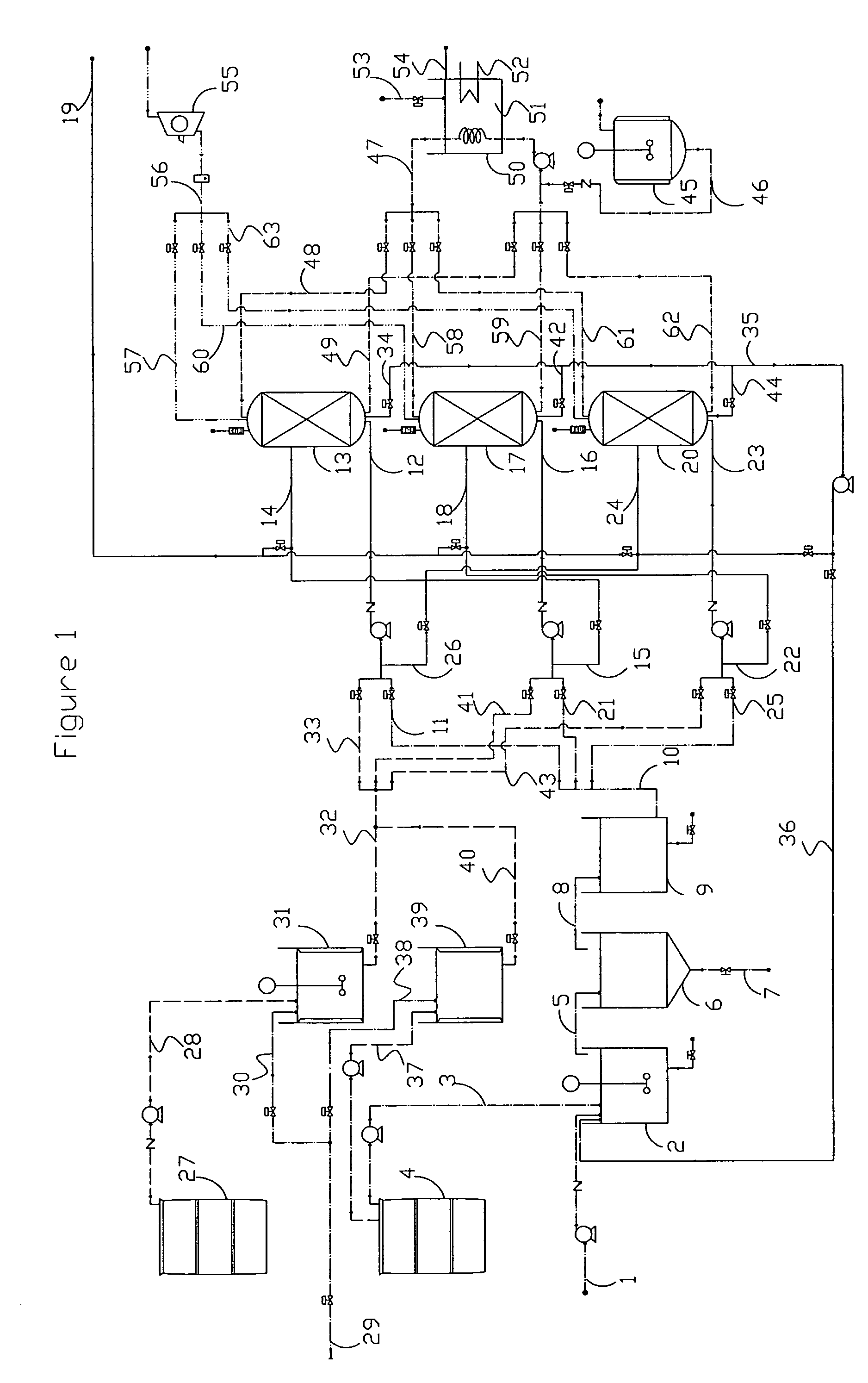Process for the removal of metals by biosorption from mining or industrial effluents
a biosorption and mining effluent technology, applied in the direction of separation process, multi-stage water/sewage treatment, quary waste water treatment, etc., can solve the problem of high metal saturation rate, difficult to apply this process for the removal of metal ions from industrial or mining effluent, and low permitted levels of metal discharge to surface and underground water bodies
- Summary
- Abstract
- Description
- Claims
- Application Information
AI Technical Summary
Benefits of technology
Problems solved by technology
Method used
Image
Examples
case 2
[0145 occurs when bioreactor 13 gets saturated with metals. In this case, bioreactor 13 is taken away from the biosorption process and is replaced by bioreactor 17, that fills the place of the first bioreactor, while bioreactor 17 is replaced by bioreactor 20. For this purpose, pre-treated water from conduit 10 is led by conduit 21 to conduit 16 to feed fixed bed bioreactor 17 with attached microorganisms. Water treated in bioreactor 17 is led by conduits 18, 22 and 23 to bioreactor 20, from which treated effluent is obtained and led, by conduit 24, to the discharge of the plant 19.
case 3
[0146 occurs when bioreactor 17 gets saturated with metals. In this case, bioreactor 17 is taken away from the biosorption process and is replaced by bioreactor 20, that fills the place of the first bioreactor, while bioreactor 20 is replaced by bioreactor 13. For this purpose, pre-treated water form conduit 10 is led by conduit 25 to conduit 23 to feed fixed bed bioreactor 20 with attached microorganisms. Water treated in bioreactor 20 is led by conduits 24, 26, and 12 to bioreactor 13, from which treated effluent is obtained and led, by conduit 14, to the discharge of the plant 19.
[0147]Once bioreactor 20 gets saturated with metals, case 1, already explained, starts again.
Desorption and Neutralization Stages
[0148]During the time bioreactor 13 is out of the biosorption process (case 2), it is subjected to the desorption stage that allows to elute the metal ions from the bioreactor and regenerate the metals binding capacity of the microorganisms attached to the support. This is perf...
PUM
| Property | Measurement | Unit |
|---|---|---|
| concentration | aaaaa | aaaaa |
| concentration | aaaaa | aaaaa |
| temperature | aaaaa | aaaaa |
Abstract
Description
Claims
Application Information
 Login to View More
Login to View More - R&D
- Intellectual Property
- Life Sciences
- Materials
- Tech Scout
- Unparalleled Data Quality
- Higher Quality Content
- 60% Fewer Hallucinations
Browse by: Latest US Patents, China's latest patents, Technical Efficacy Thesaurus, Application Domain, Technology Topic, Popular Technical Reports.
© 2025 PatSnap. All rights reserved.Legal|Privacy policy|Modern Slavery Act Transparency Statement|Sitemap|About US| Contact US: help@patsnap.com



